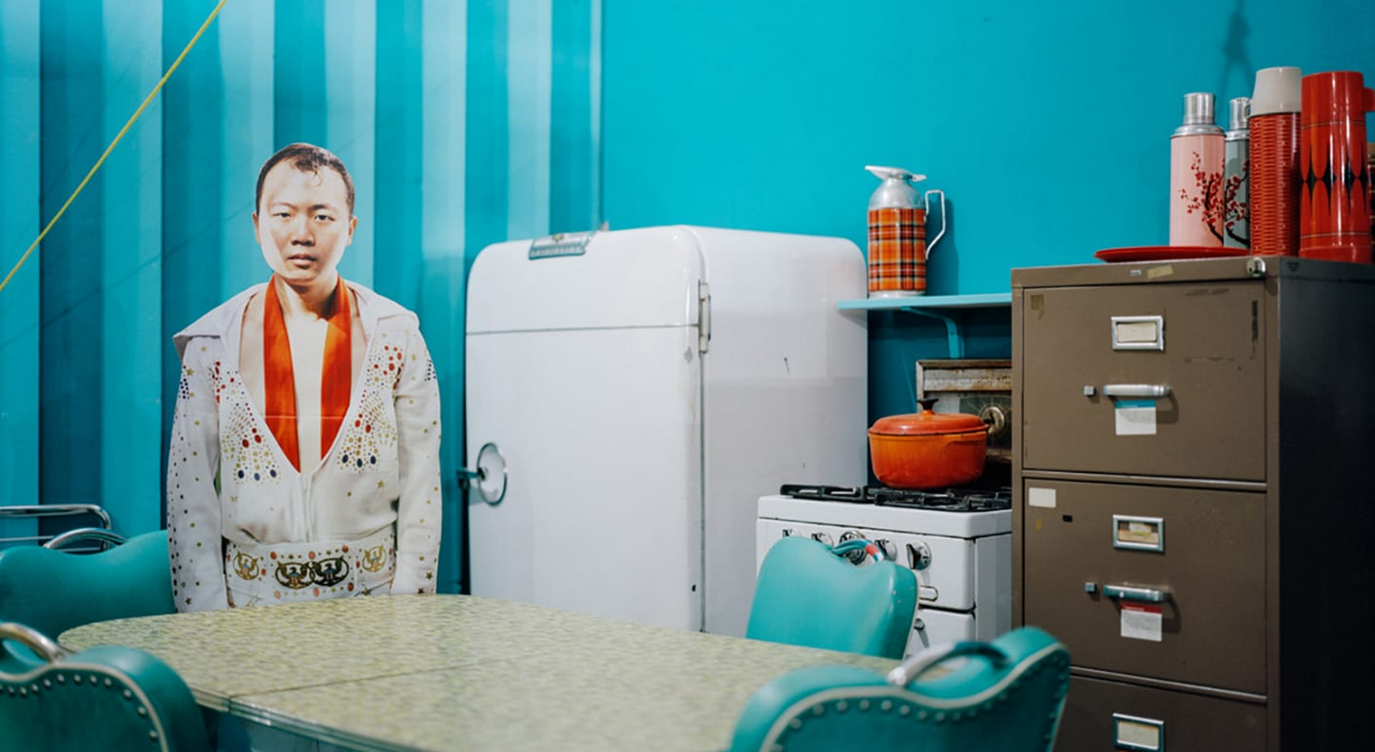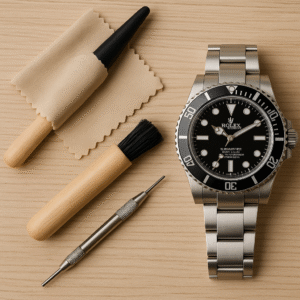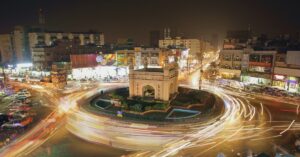In a photograph by artist Tommy Kha, the artist dressed as Elvis Presley in a bedazzled low-cut white suit stares at the viewer from behind a table in a retro-looking bright teal kitchen. Just as uncanny is his blank unbreaking gaze and harsh light flattening his figure.
Yet, there’s a valid justification for this absence of profundity – – Kha isn’t really present in the photo. Rather it’s a cardboard pattern of a representation of himself, set up between the metal-edged table and blue calfskin seats. The picture was taken by risk – – Kha was towing around the pattern of himself, named “Me as Andy Kaufman as Elvis Minus the Singing,” when he was in a Miami prop rental studio; he saw the kitchen set and put it there, viewing the scene as fortunate.
“A great deal of my work in the middle among organizing and making do,” he made sense of on a call from Brooklyn, New York, where he is based.
A strong representation of parenthood and outlandish moving
As a Chinese American craftsman who experienced childhood in Memphis, Tennessee, Kha’s work frequently ruminates on how strange Asian men have been addressed in photos. In any case, he likewise dismantles how character is created and performed, and whether the characterizing markers of an individual can be subbed. He has gone through numerous years taking self-representations without being genuinely in the edge, recreating his face through cardboard pictures, 3D-printed models, riddles and veils which he puts before the camera. Will printed duplicates of an individual inform the watcher something concerning what their identity is? Will doppelgangers – – for which he periodically holds projecting calls – – do likewise?
“How can one show up (at) their own portrayal? I’m looking for that response from the two sides of the camera,” he said in a meeting with Aperture in 2019. “How would I show up at myself?”
At the point when Kha captured himself as Presley (or all the more precisely, as the jokester Kaufman copying Presley), he had proactively been shooting individuals who have gone through years slipping the King of Rock and Roll’s character here and there. He was attracted to the “accolade craftsmen” – – all the more ordinarily known as impersonators – – for their family relationship with his own training.
“(They are) had as it were. Also, I sort of adoration that. Dislike it’s phantoms or any such thing, yet a method for summoning the past…through their exhibitions,” he told CNN.
Unforeseen discussion
Growing up only a five-minute drive to Graceland, Presley was a certain presence in Kha’s life as a youngster. Presently, each mid year, Kha gets back to Memphis for Elvis Week, where clones run to the city to contend in a yearly rivalry. Kha stays nearby the scenes where they perform and cruises all over the city paying special attention to their obvious styled dark hair.
“It’s not straightforward replicating. These people learn movements and…train their voices,” he said. “It’s specialty to me.”
Kha has captured various individuals who copy Presley throughout the long term, however in this picture he offers himself as the American symbol. It is right now visible at the Memphis International Airport, among the fine arts of other Memphis-reared craftsmen, however the air terminal briefly taken out the work in March following basic online entertainment remarks about the work, some of which were “straightforwardly bigoted,” as per an assertion by the UrbanArt Commission, which worked with the air terminal’s acquisitions for its assortment. In the midst of reaction over its expulsion, the air terminal reinstalled the work three days after the fact.
“I’m very frustrated as it was one of a large number chose to hang in the new concourse- – an honor that associated me to the spot where I developed up…and the open door gave me trust that craftsmen such as myself could be addressed,” Kha posted on Instagram after its expulsion.
In a proclamation gave to CNN from March, the neighborhood air terminal power’s CEO Scott Brockman kept up with that the explanation the air terminal eliminated the work was on the grounds that they wished to try not to show a VIP or well known person in the assortment considering the “pessimistic criticism.”
“There were few remarks that included language that alluded to Mr. Kha’s race, and such remarks are totally unsuitable,” Brockman said in the explanation. “The Airport Authority doesn’t uphold those remarks nor does it structure the reason for the Authority’s choice with respect to the piece.”
Since the work was reinstalled, Kha is expecting to move the concentration into help for neighborhood craftsman networks. He has started facilitating a progression of occasions with the Urban Art Commission; the first occurred at the Memphis Brooks Museum of Art about “the intricacies of showing work inside open and confidential spaces,” as he depicted in a new Instagram post. He’ll have proficient improvement studios through his residency program in Memphis, Crosstown Arts later in the mid year. This month, he at last had the potential chance to see the enormous scope print face to face when he restored back home to Memphis.








